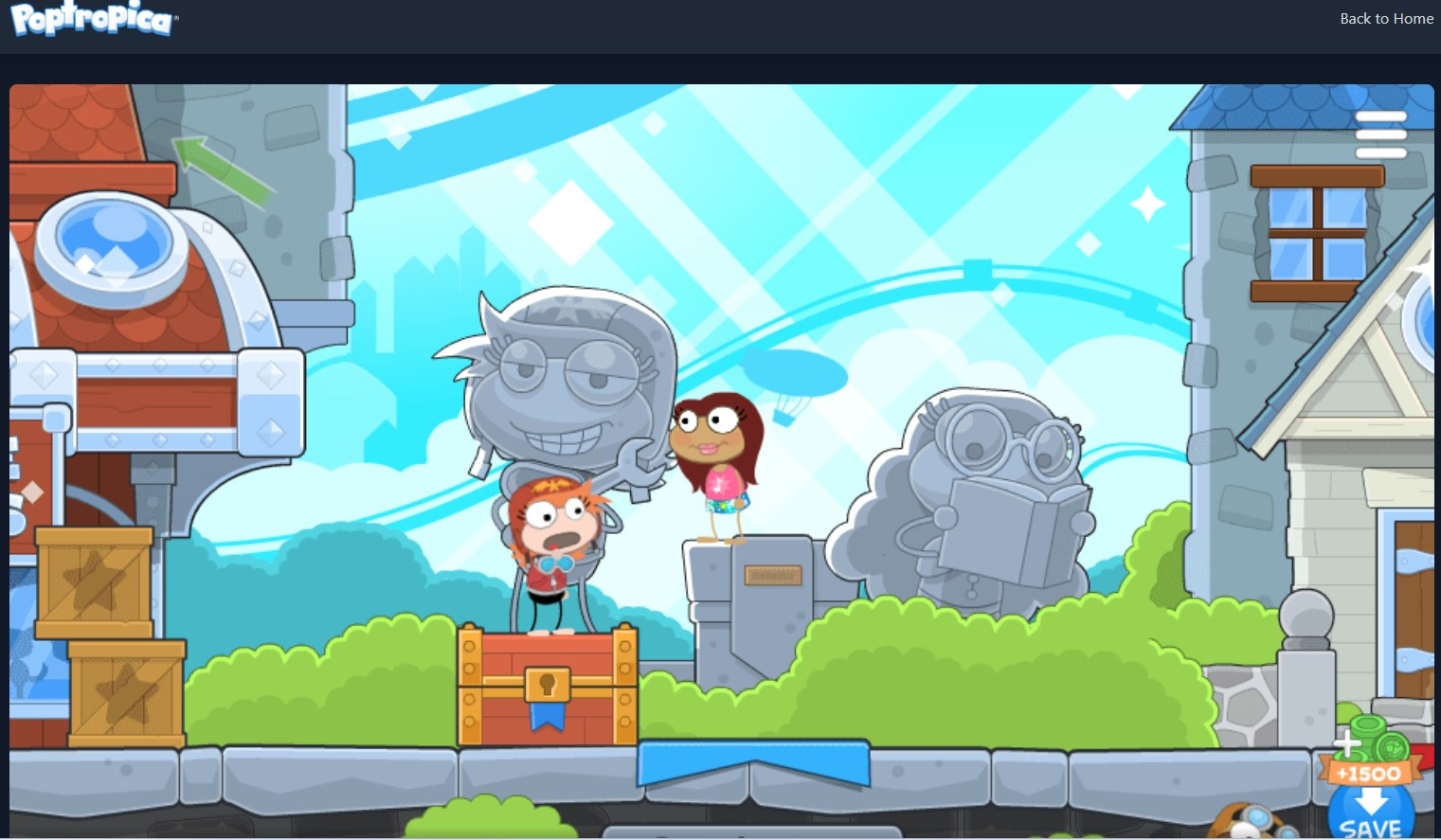If you grew up in the late 2000s or early 2010s, chances are you’ve heard of Poptropica. This online role-playing game captured the hearts of millions of children and young teens worldwide, offering not just entertainment but also a chance to learn problem-solving skills through fun adventures. Even today, Poptropica continues to attract curious gamers who want to explore islands, solve mysteries, and experience a colorful virtual world unlike any other.
The Origins of Poptropica
Poptropica was launched in 2007 by Jeff Kinney, the author best known for his Diary of a Wimpy Kid series. Published by Pearson Education’s Family Education Network, the game quickly gained traction among children, schools, and families because it blended education with entertainment.
Unlike violent or competitive games, Poptropica emphasized adventure, creativity, and problem-solving. Players, called “Poptropicans,” would travel across different islands, each with unique stories, puzzles, and challenges. The focus wasn’t on winning but on exploring, learning, and having fun.
Creating Your Poptropican
One of the first things players loved about Poptropica was the chance to create their very own character. Customization was simple yet engaging. You could choose your avatar’s hairstyle, outfit, and color scheme. Over time, as players completed challenges, they could unlock special costumes, accessories, and powers, making their Poptropican truly unique.
Character creation gave kids a sense of identity and belonging in the Poptropica world. Many players spent hours mixing and matching outfits, proudly showing off their avatars to friends.
The Islands: Heart of the Game
The most iconic feature of Poptropica is its islands. Each island represents a self-contained adventure with a story, characters, and puzzles. Some of the most memorable islands include:
-
Early Poptropica Island – The very first island, teaching players the basics of exploration and puzzle-solving.
-
Time Tangled Island – A historical adventure where players traveled through time to fix events like the invention of the light bulb or the signing of the Declaration of Independence.
-
Mythology Island – A fan favorite, where players met Greek gods like Zeus and Athena while solving mythical challenges.
-
Spy Island – A thrilling mission where players acted as secret agents uncovering enemy plots.
-
Shark Tooth Island – A beach-themed adventure involving sharks, danger, and survival.
Each island took players into a completely different world, keeping the game fresh and exciting. This was one of Poptropica’s greatest strengths: variety and imagination.
Educational Value Behind the Fun
Although Poptropica felt like pure entertainment, it had a hidden educational core. Many islands were inspired by history, mythology, and literature. For example, Time Tangled Island exposed kids to major historical figures, while Mythology Island introduced them to Greek legends.
The game encouraged reading, problem-solving, and critical thinking, as players had to carefully follow dialogue, interpret clues, and solve logic-based puzzles. Teachers even recommended the game as a safe and fun learning tool, making Poptropica both parent- and classroom-approved.
The Multiplayer Experience
While Poptropica was not designed as a competitive game, it did include some light multiplayer elements. Players could enter “common rooms,” where they interacted with others, played mini-games like “Sky Dive” or “Paint War,” and made friends.
This social interaction helped children build communication skills and connect with players around the world. Unlike other online games, Poptropica maintained a safe environment with strict moderation, which reassured parents about online safety.
Membership and Special Features
Over time, Poptropica introduced a membership system that allowed players to access exclusive costumes, powers, and early island releases. While the core game remained free, membership enhanced the experience and allowed players to stand out in the community.
Special items like “costume powers” let players transform into characters they encountered, adding extra fun to customization. Membership also supported the game’s continued development, helping Poptropica expand its world and stories.
Poptropica’s Evolution Over the Years
Like many online games, Poptropica faced the challenge of evolving with technology. Originally built on Flash, the game had to adapt after browsers phased out Flash support. The developers responded by creating a new version of Poptropica that worked on both web and mobile platforms.
The updated version brought modern graphics, smoother gameplay, and mobile accessibility while still keeping the charm of the original islands. Although not all classic islands were transferred, the game continued to grow with new content and adventures.
Why Poptropica Still Matters Today
Even though many kids who played Poptropica have now grown up, the game still holds a special nostalgic place in their hearts. For some, revisiting the islands feels like reliving childhood memories. For new players, Poptropica remains a safe, fun, and imaginative escape from reality.
The game also stands as a reminder of a time when online worlds focused on creativity and problem-solving rather than competition and violence. In many ways, Poptropica set the standard for kid-friendly online gaming.
Tips for New Players
If you’re starting Poptropica for the first time, here are a few quick tips to enjoy the experience:
-
Start with the classic islands – They provide a strong introduction to how the game works.
-
Talk to every character – Dialogue often contains important clues.
-
Take notes – Some puzzles require remembering codes, dates, or details.
-
Customize often – Express yourself with fun outfits and costumes.
-
Be patient – Some islands are challenging but rewarding once solved.
The Legacy of Poptropica
Poptropica is more than just a game; it’s a piece of internet history. For over a decade, it has introduced millions of players to exciting adventures, new cultures, and creative storytelling. Its mix of fun and education made it stand out in a crowded market of online games.
Whether you’re a nostalgic player revisiting old islands or a newcomer exploring for the first time, Poptropica continues to inspire imagination and curiosity.
Conclusion: The Adventure Lives On
Poptropica may have started as a simple online game for kids, but its impact has gone far beyond that. With its engaging islands, educational storytelling, and safe online environment, it has become a timeless digital playground.
